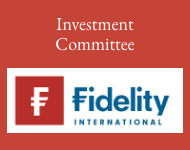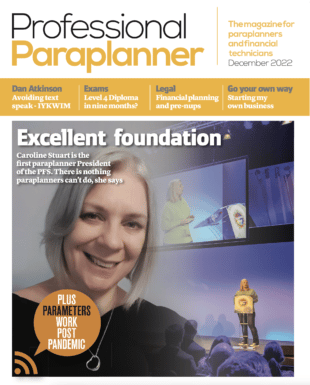Bob Kaynor, manager of the Schroder US Mid Cap fund, outlines some exciting opportunities in the US mid-cap market, currently trading at historically significant valuation discounts. This FundCalibre interview discusses how these companies, the “heartbeat of the US economy,” stand poised for potential growth, driven by earnings acceleration and favourable fiscal policies.
Why you should listen to the interview: For anyone curious about mid-cap companies’ role in the market and why they are considered the “heartbeat” of the US economy, this interview has your answers. With discussions on the Fed rate cuts, election impacts, and undervalued sectors, this episode offers a comprehensive view of investing in US mid-caps.
This interview was recorded on 25 September 2024. Please note, answers are edited and condensed for clarity. To gain a fuller understanding and clearer context, please listen to the full interview.
Interview highlights:
“History rhymes, it doesn’t repeat”
“Starting points do matter and I think we’re starting from a very kind of extreme point from a lot of way lot of perspectives, relative valuations, relative positioning, concentration in the market. From a valuation perspective, historically the small and mid-cap space had been at a premium to the market because it had had higher growth earnings growth in the market. That narrative has changed recently.
“We’re currently at almost a 15 to 20% discount relative to the S&P 500. The S&P 500 is trading at 23 times, I believe on next year’s numbers. And the small/mid-cap space is trading closer to 18 at a time when we should see earnings growth begin to accelerate. And obviously there’s a Fed rate cutting cycle that just kicked off. That’s usually good for valuations.
“So I think the setup is very similar. History rhymes, it does not repeat. There’s a lot of similarities to what we saw in the late 90s. And to your point, the subsequent period coming out of it, I’ll say the internet bubble was a very good time to be invested in small and mid-cap equities.”
Soft landing?
“So the market is pricing in another 50 basis points in the November meeting. I think the direction of travel is clear. How the market behaves into that cutting cycle really comes down to whether or not the economic data weakens at an accelerating pace. Right now we’re in the sweet spot where jobs are slowing, but at a measured pace, inflation is coming down as expected. If the pace of economic decline accelerates or economic slowdown accelerates, the market will start to think the Fed is behind the curve and react differently.
“But for the moment we’re in this soft landing narrative, and that is very good for small and mid-cap equities that do tend to be a little bit riskier. There’s a little bit less liquidity, there’s a little bit more volatility. They’re very tied to the US economy. They don’t benefit from China making aggressive monetary policy changes. So I think the backdrop right now is very good.
“If the pace of economic deceleration accelerates to the downside, I think it gets a little trickier. But again, to the first point you made, you’re starting this cycle from a point of really discounted valuations, which should protect you in the downside relative to what we’re seeing in in large cap valuations and what that market is pricing in.”
The heartbeat of the US economy
“We’ve always said large cap is the headline, but small and mid-cap is the heartbeat. 84% of the revenues of these companies is generated in the US. So they are very much domestically focused companies. I think one of the appealing aspects at this point in this cycle is that we have lots of fiscal stimulus that is working its way down the funnel. Many of these laws were approved a couple of years ago, but they didn’t go through the rules making process in the US which is the unfortunate period of time I’ll say, where politicians get to put their fingerprints on these until really just a year ago, and it was really a year ago at this time, that the companies we speak to started to talk about orders and bookings and revenues associated with specific fiscal stimulus plans like the IRA and to us that’s a catalyst. So I would say very much we still feel like our companies are the heartbeat. They’re where real employment is in the US and their revenues are heavily, heavily concentrated towards what’s happening in the US.”
Discovering niche markets
“We own a company called Kirby. Kirby does inland barges. It’s an industry that’s massively consolidated capacity came out during Covid, and it’s a contract business, and they’re contracting at much higher rates for their barges than they have historically. That industry has a huge moat around it because there’s something called the Jones Act in the United States that requires ships, transporting between, moving in between ports in the US must be built in the US so you can’t really bring capacity in from the outside.
“Their earnings growth is gonna compound at over 30% for the next three years. Pre-covid, they used to earn $3 in earnings. We have them doing north of $750 in two years. And the stock trades at 16 times earnings. So yes, it’s a very diverse market in small and mid-cap.
“One of the reasons I think we love the asset classes. There’s nothing we have to own. There’s nothing in the benchmark that represents a large percentage. If I’m a large cap manager and I don’t own Apple, I’m short Apple, we don’t have that risk in the small and mid-cap space, which allows us to go access growth and opportunity across a wide variety of industries and sectors.”
Conclusion: It’s clear that US mid-cap companies present compelling opportunities in today’s market; with valuation discounts and the potential for growth driven by earnings acceleration, the mid-cap sector is worth watching closely. Bob also gives a nice reminder as to why politics are important and investors should be keeping a close eye on the US elections.
Main image: nico-smit-Q1tAFjL34C4-unsplash
































